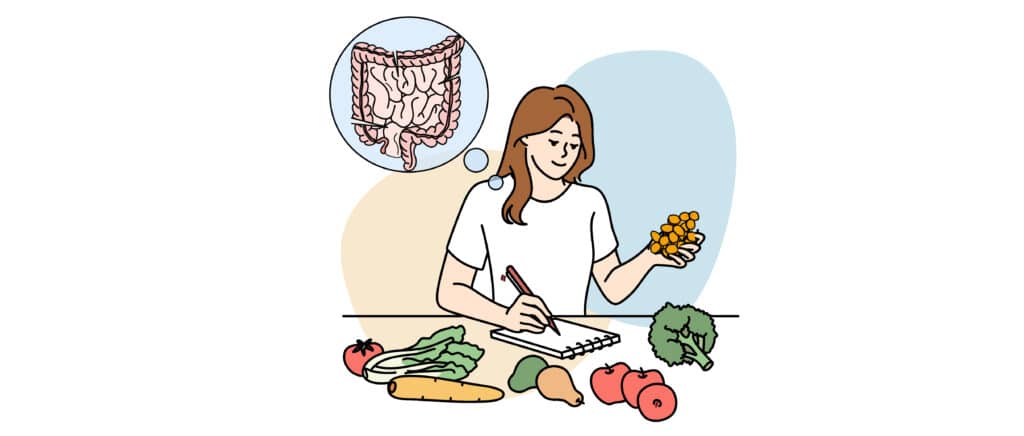Should You Do Cardio or Strength Training for Your Workouts at Home?
- The combination of healthy eating and regular exercise results in improved health and longevity.
- Strength training involves engaging in resistance exercises that cause muscle growth.
- Cardio (aerobic exercises) involves sustaining exercises of varying intensities that get your heart rate up and your blood pumping.
Working out at home eliminates the commute and cost of going to a gym. No wonder why it is such an appealing choice! But one question must be considered: should you be doing cardio (aerobic exercises) or strength training?
It can be a bit confusing knowing what to do, how often, and for how long. Choosing a simple routine that you can stick with long-term is the key. This will help you be successful when working out at home.
What is strength training and why should you do it?
Strength training involves putting resistance on your muscle fibers. This is done by using a specific set of muscles to push or pull against external forces or body weights. Regularly exercising can help you become stronger and healthier. We recommend doing strength training exercises at least twice a week for 20 to 30-minute long sessions.
It is important to work each muscle group on a weekly basis in order to prevent muscle imbalance. In the upper body, focus on the chest, shoulders, triceps, biceps, back, and abdominals. In the lower body, focus on the glutes, quads, hamstrings, and calves.
If you are first starting out, try doing bodyweight exercises only. You will only need to use your own body as resistance. Over time, utilize progressive overload by adding weights. Some great tools are dumbbells, kettlebells, and medicine balls.
If you are planning your own workouts and do not have the help of your physician or a personal trainer, there are a few things you need to plan:
- First, choose between five and ten exercises to include in one workout.
- Do two to four sets of each exercise and do eight to twelve reps.
- You can start with smaller numbers and increase them as you become more advanced.
There are various benefits to consistent strength training:
1. Improved Balance
Your balance can be improved as you develop your abdominals. In fact, certain exercises will require both your concentration and strength as they may require you to be on only one foot.
2. Increased Muscle Mass
As long as you are actively increasing your weight or reps, your muscle mass will increase. This will lead to a stronger physique.
3. Increased Flexibility
When done properly, strength training exercises will allow you to increase your range of motion.
4. Increased Bone Strength
Your bone strength will increase as it develops under the heavy loads of the weights you use.
5. Help in Weight Loss
Because they increase your muscle mass, weight loss becomes easier, as you are burning calories during the workouts. It will also give you control over how you look.
What is cardio and why should you do it??
Cardio is also known as aerobic exercises. They refer to exercises that increase your heart rate. It appears to have almost an endless amount of benefits. In fact, we recommend doing them quite often in order to live a heart-healthy lifestyle.
The American Heart Association suggests performing either 75 minutes of vigorous activity or 150 minutes of moderate activity every week. This averages out to doing cardio sessions 5 days a week for around 30 minutes each day.
Over time, your ability to go further and faster with the cardio exercise of your choice will increase. This is due to your heart and lungs becoming stronger. Everyday activities such as cleaning the house and walking the dog may also appear to be easier. Your body becomes more accustomed to the stress of regular cardio sessions.
Each person has different capabilities based on their cardiovascular strength. Luckily, there is something for everyone.
We recommend starting out with walking, swimming, or on a rowing machine. These exercises are ideal, as they are straightforward and low impact.
Jogging, biking, sprinting, playing sports, and HIIT (high-intensity interval training) exercises are also great options if you are wanting something more intense.
The following are just a few of the many benefits of performing cardio sessions regularly:
1. Improved Mood and Self-Esteem
As your body releases endorphins during cardio exercises, your mood and self-esteem can be boosted. These hormones also help with suppressing depression.
2. Improved Memory and Thinking
Through heartbeat-raising exercises, your memory and thinking abilities can improve. Your risk for dementia and Alzheimer’s may also decrease.
3. Improved Blood Flow
Because cardio exercises increase your heartbeat, they also improve your body’s blood flow. This leads to healthier skin and decreased chances of stroke.
4. Better Control of Chronic Diseases
Cardio helps you develop more control over your blood sugar and cholesterol levels. This helps with preventing diseases such as diabetes and heart disease.
5. Improved Bone Strength
Similar to strength training exercises, cardio forces your body to move. Your bone strength can improve, resulting in reduced chances of hip fractures and osteoporosis.
6. Better Sleep
Regular cardio exercises can help improve your sleep habits. This leads to lasting energy throughout the day.
7. Better Sex Health
Sexual health in both men and women can improve as you routinely do cardio exercises. They increase their sexual stamina and there is a decreased chance of erectile dysfunction.
8. Improved Mobility
Cardio exercises help you move your body. As long as it does not bring joint pain, certain exercises may lessen the discomfort of arthritis. Your range of motion can also improve.
Is strength training or cardio better to do at home?
When it comes down to choosing between cardio and strength training, many factors can determine which is best for you. If you are an average person wanting to maintain a healthy lifestyle, it is essential that you include both in your weekly exercise regimens. We believe that a combination may provide you with the benefits of both types of exercises.
Strength Training
If your goal is to increase muscle mass, strength training is vital. Try including a minimum of three 30-minute training sessions a week.
If you want to pair it with cardio, try sticking to activities of low intensity, such as walking, biking, and swimming. Perform these activities either after your lifting sessions or on separate days. Doing cardio before lifting weights will deplete the energy that should be dedicated to your strength training sessions.
Ideas for strength training exercises:
- Abdominal crunches
- Bicep curls
- Lunges
- Squats
- Pushups
- Wall sit
- Step exercises
- Planks
Cardio Exercises
If you are trying to burn fat and gaining muscle is not a priority, focus on cardio. A great first step is getting in as many walks a week as possible.
Ideas for cardio exercises:
- Cycling
- Running
- Dancing
- Hiking
- Kickboxing
- Walking
- Swimming
- HIIT workouts
Daily movement is important for maintaining overall health and increasing longevity. If you are able to get in more cardio, activities of high intensity will be the most effective. Following along with HIIT workouts on YouTube or going for a run are great options.
How should you eat when exercising regularly?
The saying, “abs are made in the kitchen” exists for a reason! Although exercise is crucial for staying healthy, eating right is even more important. Your body cannot properly function if it does not have a regular intake of nutrients.
Try the following tips to optimize the results you get from your at-home workouts:
1. Start your morning right!
Get your metabolism going by eating a healthy breakfast. You can do this before heading off to work. Providing the body with nutrients first thing in the morning is a good idea! It is a great way to ensure that you will have lasting energy and a clear mind throughout the day. Try breakfasts that include veggie omelets, whole-grain cereals or bread, protein pancakes, yogurt and fruit, and smoothies.
2. Choose the right things to snack on during the day.
As the day goes on and you get busier, it may feel easier to grab something convenient like a candy bar or chips. You know that it will taste good and give you that quick energy that you need.
However, we recommend being mindful of what you consume. There are easy snacks to prepare that are lower in calories and nutrient-dense. These include fruit, veggies and hummus, protein bars, and protein shakes. You can even try low-sugar granola bars and PB&J on whole-grain bread.
3. Strategize what you eat before and after your workouts!
This is one of the most important things to do. This is especially true if you want to maximize your results and fuel your body properly.
A great pre-workout snack to try is date fruit. They are low in calories, yet will deliver a lot of energy and nutrients to get your workout started right.
We also recommend eating them after your workout! Dates are good post-workout snacks due to the amounts of potassium in them. This helps prevent muscle cramping and reduces soreness.
Consuming something high in protein, along with a carbohydrate source, will help replenish your glucose stores while helping your muscles repair.
4. Stay hydrated!
The body is made up of water more than anything. Drinking enough water throughout the day can help prevent bloating and extra water retention. This is because constant hydration helps keep things flowing.
Drinking water during your workout is also very important for keeping you hydrated and preventing muscle cramping. If you do not like drinking water, try utilizing a 0-calorie flavoring to make it more appealing. Low-sugar sports drinks are also great options.
Exercising at home is a great option for staying in shape! To get started, identify what your health goals are and determine whether strength training or cardio should be your priority. There are many benefits to both options. In fact, combining them would be ideal. Make sure to properly fuel your body. You can start by following the suggested tips above in regards to healthy eating!
Summary
Doing both strength training exercises and cardio on a regular basis will improve your health and longevity. Neither form of training is better than the other; whichever is best for you depends on your specific goals. Eating healthy is also very important for helping you achieve a healthy lifestyle!
Scientific Information
- HIIT workouts are workouts that alter between intense bursts of activity and fixed periods of less-intense activity or short-term rest.
- Dementia is a loss of memory, language, problem-solving, and other thinking abilities that are severe enough to interfere with daily life.
- Arthritis is the swelling and tenderness of one or more joints.
- Osteoporosis is a bone disease that occurs when the body loses too much bone, makes too little bone, or both.









